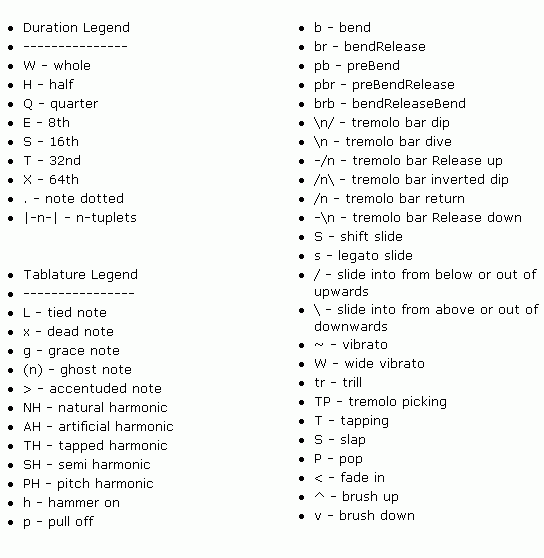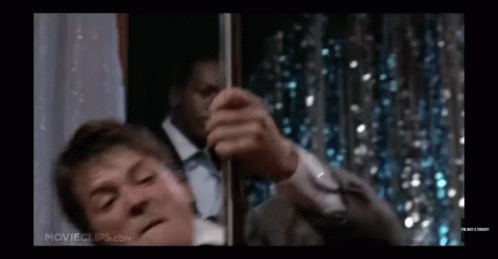Tablature
Since standard notation requires one to learn to sight read music and since rock ‘n’ rollers of the 1960’s probably didn’t want anything to do with the ‘classic’ approach to learning music since rock ‘n’ roll was probably the first rebellious period in modern music … musicians didn’t care much about standard notation and looked for a different way to notate music for guitar (and bass) that might be easier for them. The concept of tablature is very simple: since a guitar has 6 strings and the fret positions are always referred to using numbers, six lines are used to represent the six strings (4 lines if playing a 4 string bass etc) and the notes themselves are simply numbers representing the fret that is to be held. Tablature is often shown just below standard notation so that a player can also see the equivalent music in standard notation format however depending on what is being displayed (ie. if the timing of the passage you are about to play is obvious), you may also see only tablature. Similar to standard notation, tablature also uses bar lines to divide the music into smaller chunks according to the time signature. There are two types of tablature that you will see. The first is the true tablature format and looks more official and usually also has the standard notation above it and the second is a notepad text format where the lines/strings are simply dashes with numbers on them. This is a much simpler format that allows you to notate music without needing a tablature making program.
In the image below, the left tablature (tabs) are the ‘official’ tabs with the standard notation above and the tabs below. On the right, you can see the notepad version of the same music.

The format on the left is the format you will see in magazines or in some online official notation/tablature providers. They usually also include a Tablature Legend so that you can refer to it as needed however you can easily just search the web for ‘guitar tablature legend’ and you’ll see a few versions of the legend. The format on the right however doesn’t always include a legend as this is a format that is used by ‘regular joes’ that don’t have tablature creation software. You’ll see a lot of these types of tabs online as well as in the 1way2rock lessons therefore below is the notepad version of the tablature legend.

Note however that we will not go into too much detail about each technique or note listed here since we will deal with guitar techniques in a later lesson as well. If you’re just starting to play, this can confuse or discourage you at this point. Having said this, don’t be too concerned about the terms you see in the legend as most of these names are more intimidating than they are difficult to play. Just take things step by step. We’ll get there! The most important thing right now is to understand how standard notation differs from tablature and that there are multiple ways of notating music. Understanding how the strings and frets are displayed is the goal so that we can move ahead to get you playing.
